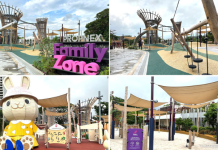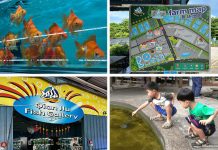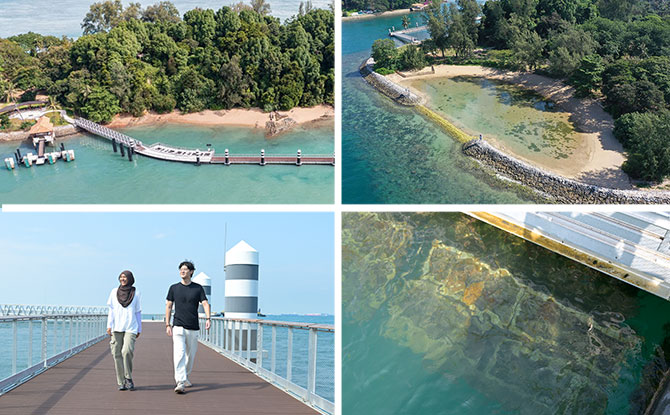
Pay a visit to Sisters’ Islands Marine Park and explore features like Singapore’s first floating boardwalk, a coastal forest trail and an enhanced lagoon tidal pool. The park offers nature enthusiasts a chance to get up close to Singapore’s marine biodiversity and to appreciate our natural heritage.
Sisters’ Islands Marine Park: A Strengthened Role in Marine Conservation
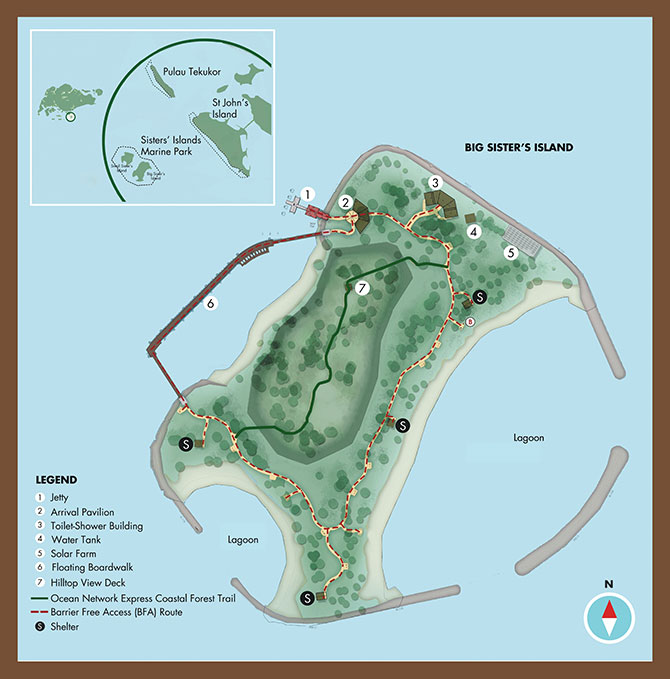
Sisters’ Islands Marine Park was established as Singapore’s first marine park in 2014. It acts as a safe harbour for the teeming biodiversity around the Southern Islands and its surrounding waters, with a variety of habitats such as coral reefs, sandy shores and seagrass meadows.
Those who are familiar with local legends will know that Sisters’ Islands consists of two islands. One is know as the Big Sister’s Island while the other is the Small Sister’s Island. According to lore, they were created when two sisters who were transformed into the land masses.
Today’s Sisters’ Islands Marine Park is made up of not just the Sisters’ Islands but the western reefs of St John’s Island and Pulau Tekukor.
FREE FOR LITTLE DAY OUT PARENTS: Sign Up for a Free Trial with ACT 3 Academy to Find Out If Drama Classes are Right for Your Child
3 Recycling Adventures: Fun Ideas For Kids & Families
1:1 & Small Group English Lessons: How to Get Personalised, English Help
Big Sister’s Island provides the public with greater access to marine-based recreation and education, while Small Sister’s Island is a dedicated site earmarked for marine conservation and research to promote species recovery and habitat enhancement.
Sisters’ Islands Marine Park covers a total of 40 hectares.
There is also a Sisters’ Islands Marine Park Public Gallery on St John’s Island. This provides visitors to St John’s Island with a glimpse at the marine park.
What to Expect at Sisters’ Islands Marine Park
Jetty and Arrival Pavilion

When you first arrive at Big Sister’s Island, you will step foot on the short jetty that leads in to the island. There is a small Arrival Pavilion.
You will be greeted by floor imprints featuring marine life found around the marine park. This includes fish, molluscs, cnidarians and echinoderms. The pavilion is a new structure and it provides shelter in the event of inclement weather or if the sun is beating down to hard.
Just beyond the pavilion is the Toilet-Shower Building.
There is also a new solar farm, desalination plant and water tower on the island. These allows the marine park to be a net-zero energy marine park that is fully powered by solar energy. In addition, to minimise the impact of the works, special care was also taken to ensure the use of recycled timber and sustainable materials. For example, the benches around the marine park are made of recycled casuarina timber from the island.
Floating Boardwalk that Also Serves as a Coral Nursery
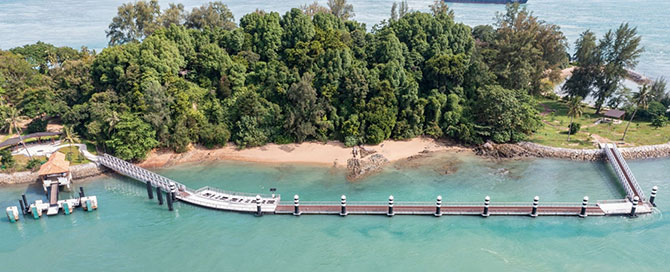
To the right of the jetty is one of the new features at Sisters’ Islands Marine Park – a 220-metre-long floating boardwalk that rises and falls with the tides. It is made up of floating concrete pontoon and steel pontoon sections that are joined and anchored in place with dolphin piles to provide buoyancy.

Walking along the floating boardwalk, you will be able to observe marine life up close regardless of the tide level.
This is the first floating boardwalk in Singapore that also serves as a coral habitat, coral nursery and research site. There are panels on the lower sides of the boardwalk that serve as a substrate for corals to establish and grow.
The floating boardwalk also acts as a shelter for marine fish. When visiting, be sure to look down to view a variety of fish scurrying in and around the shallow coral panels.
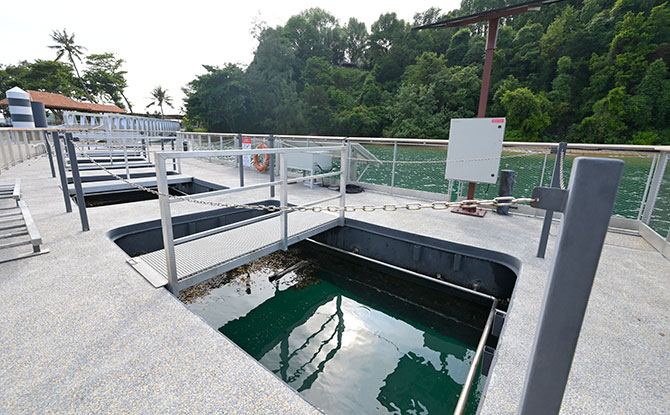
Five moon pools along the boardwalk allow for a variety of marine experiments to be carried out. They are designed to enable researchers to study both naturally established and transplanted corals in a field setting.
The Sisters’ Island floating boardwalk also allows you to take in a scenic view of both Big Sister’s Island and Small Sister’s Island.
Ocean Network Express Coastal Forest Trail

Another feature at Sisters’ Islands Marine Park is the Ocean Network Express Coastal Forest Trail.
This trail runs through the centre of Big Sister’ Island. At 230 metres long, it stretches through the coastal forest habitats of Big Sister’s Island, allows visitors to learn more about the island’s coastal animal and plant species.
Along the trail, you can look out for a wide variety of coastal flora such as the Mangrove Fan Palm (Licuala spinosa) and terrestrial fauna such as the Lesser-dog Faced Fruit Bat (Cynopterus brachyotis), Paradise Tree Snake (Chrysopelea paradisi) and Emerald Cockroach Wasp (Ampulex compressa).

The trail leads to a two-storey-high Hilltop View Deck, the highest point of the island, where visitors can enjoy panoramic views of the sea and surrounding offshore islands.
At the Hilltop View Deck, one of the features that you can take note of are the rope barriers. These have been made from decommissioned hoses from the Singapore Civil Defence Force.
The Hilltop View Deck not only offers stunning views of the surrounding offshore islands but also serves as a prime birdwatching spot. If you are a bird watcher, try to look out for the Spotted Wood Owl (Strix seloputo), White-bellied Sea Eagle (Haliaeetus leucogaster), and the critically endangered Great-billed Heron (Ardea sumatrana).
Lagoon Tidal Pool

The smaller of the two existing lagoons at Big Sister’s Island has also been enhanced into a tidal pool. This was done by having a low seawall constructed across the entrance of the lagoon.
This results in the tidal pool retaining seawater during low tides, creating a sheltered water body that will encourage the establishment of mangrove propagules and seagrass inside the lagoon.
During low tide, you can go on intertidal walks in the lagoon and explore the rich marine biodiversity of an intertidal habitat.
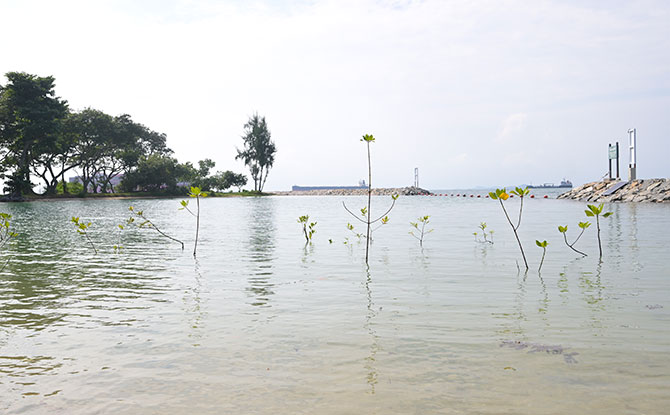
The ambition is for the tidal pool to be turned into an ecosystem with multiple habitats to support a wide range of marine biodiversity. It is aimed that the tidal pool will have four key habitats – seagrass, corals, mangrove and coastal – supporting a wide range of marine flora and fauna, which can be observed via an underwater camera.
If all goes to plan, visitors can look out for marine flora and fauna such as the Spoon seagrass (Halophilia ovalis), Api-api Jambu (Avicennia marina) and the Common sea star (Archaster typicus), turning the lagoon into an outdoor classroom.
The lagoon tidal pool will allow visitors the opportunity to get close to these marine flora and fauna through intertidal walks, and also enable educational and outreach programmes under the Singtel Marine Explorer Programme @ Sisters’ Islands Marine Park.
Other Enhancements at Sisters’ Islands Marine Park
As you walk around Sisters’ Islands Marine Park, you may also notice enhancements that have been made.
Reef Enhancement Units
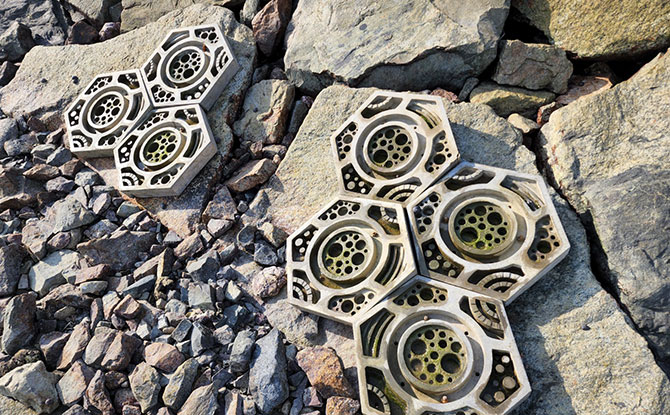
Reef Enhancement Units have been strategically placed on the lagoons’ seawalls at the intertidal zone around the marine park, including the tidal pool. They provide additional habitats for corals and other marine life. You may be able to observe closely as corals of various shapes and sizes gradually establish themselves.
Kingfisher burrow
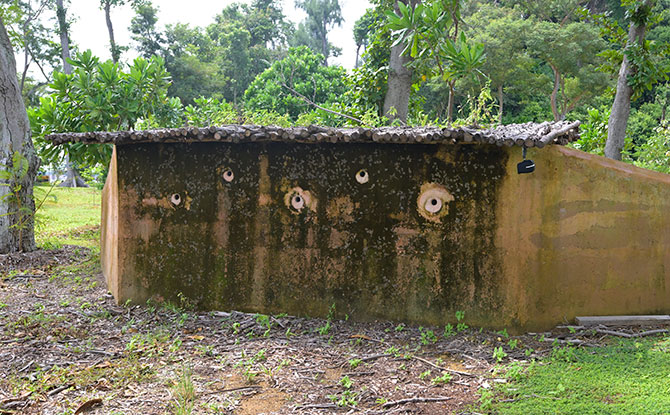
These have been designed to mimic the earth banks used by kingfishers and bee-eaters for burrowing and nesting. Amongst the features of the Kingfisher burrows are steep walls made of compacted earth that deter predators from entering. There are also tunnels leading to boxes filled with sand and soil.
Bee hotel
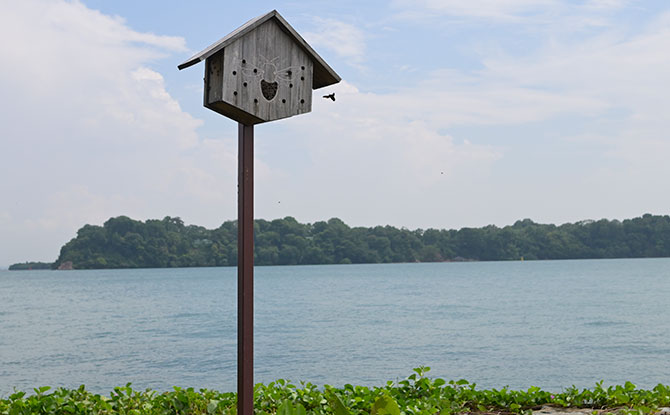
Perched up on a pole, the bee hotel is designed to resemble burrows, cracks, hollows and holes, providing solitary bees a sheltered space for nesting.
Bat boxes
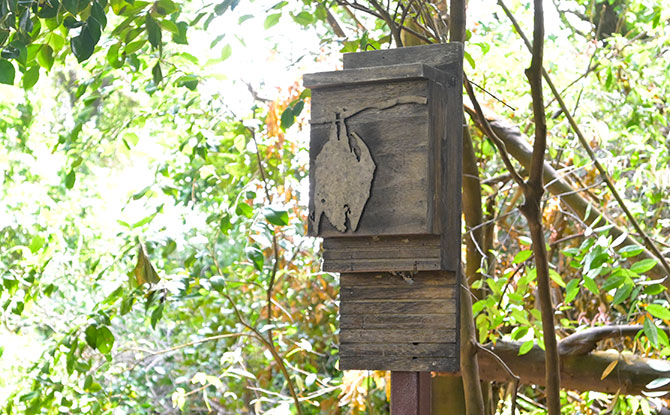
Bat boxes are raised above ground. The tower-like structures are designed to supplement the available roosting sites for bats and have rough interior surfaces that bats can grip on to.
Wildlife pile

You may come across a cute fish shaped wood pile at Sisters’ Island Marine Park. This is made of naturally occurring material found on the island, such as branches and logs. As the logs and debris naturally decompose, they will return nutrients back into the environment. The Wildlife Pile also provides food, shelter and breeding sites for a variety of animals, such as small mammals, reptiles and insects.
Getting to Sisters’ Islands Marine Park
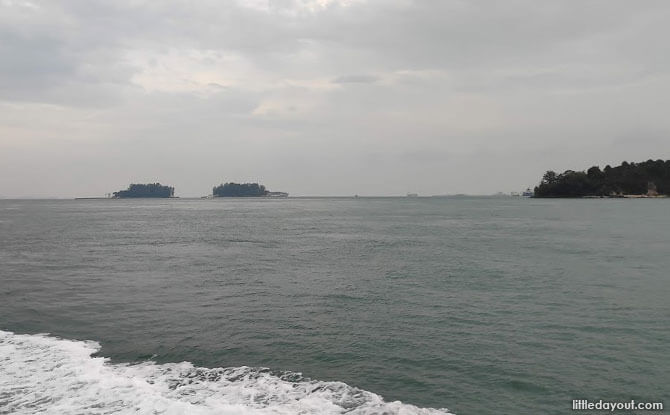
Admission to Sisters’ Islands Marine Park is free for all visitors.
You can get to Sisters’ Island Marine Park by ferry. They are run by commercial operators such as Marina South Ferries who may collect a fee for ferry services to the marine park.
Regular ferry services to Big Sisters’ Island are available from Marina South Pier.
Other areas of Sisters’ Island Marine Park (including Pulau Tekukor and Small Sister’s Island) are not open to the public as they are intended for conservation and research.
If you enjoyed this story, you may also enjoy reading our story about Sisters’ Island Marine Park Public Gallery at St John’s Island, this other story about Lazarus Island, or our visit to Sisters’ Island Marine Park on an inter-tidal walk.








